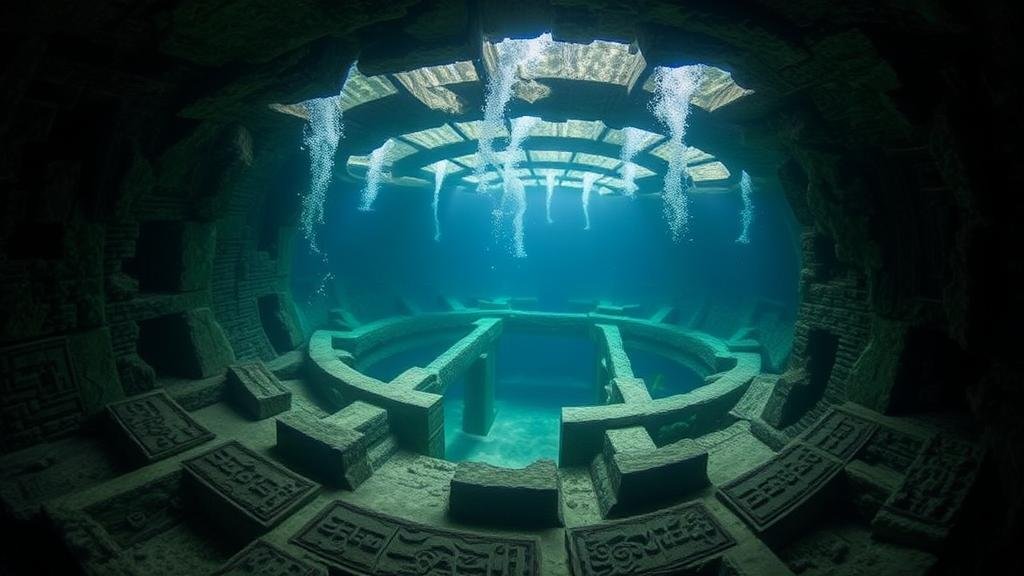Exploring underwater labyrinths said to guard ancient treasures.
Exploring Underwater Labyrinths: Guardians of Ancient Treasures
Underwater labyrinths have been the subject of intrigue and speculation for centuries, often depicted in tales of adventure and treasure hunting. These submerged corridors are not mere figments of imagination; many exist in the depths of our oceans, lakes, and rivers, holding secrets and treasures from ancient civilizations. This article delves into notable locations, the historical context behind these underwater wonders, and the potential for discoveries that could reshape our understanding of history.
Historical Context of Underwater Labyrinths
Throughout history, underwater labyrinths have been associated with myths and legends, often linked to lost cities and ancient cultures. Archaeological findings suggest that many of these structures were built by civilizations facing natural disasters, such as rising sea levels or cataclysmic events.
Examples of Notable Underwater Labyrinths
Several locations worldwide are famous for their underwater labyrinths, each presenting a unique tapestry of history and potential findings.
- Yonaguni Monument, Japan: Believed to be an ancient structure dating back to 5000 BCE, this underwater formation features steps, terraces, and what appears to be a road leading into the depths. Some theorists suggest it is a remnant of a lost civilization.
- Lake Titicaca, Bolivia: The highest navigable lake in the world is home to the submerged ruins of ancient settlements, including Pumapunku. Artifacts found here lend credence to theories about the advanced engineering skills of the Tiwanaku culture.
- The Lost City of Atlantis: Perhaps the most famous of all underwater labyrinths, it is said to be located near the Azores in the Atlantic Ocean. This myth has prompted exhaustive searches, spurring interest in underwater archaeology.
The Search for Treasures
Many explorers and archaeologists have set out on quests to uncover treasures hidden within these labyrinths. The allure of sunken riches often drives expeditions, yet discoveries are not solely materialistic; they contribute vastly to our understanding of ancient societies.
Technological Advances in Exploration
In recent years, technological advances in underwater exploration have revolutionized the field. Remote-operated vehicles (ROVs) and sonar imaging allow researchers to map and navigate these intricate environments more effectively than ever.
- Sonar Technology: High-resolution sonar mapping has uncovered numerous underwater structures that were previously undetectable. For example, in the Black Sea, sonar exploration revealed the remnants of ancient shipwrecks dating over 2,500 years old.
- ROVs: These unmanned vehicles equipped with cameras and robotic arms facilitate detailed investigations of submerged sites. In 2019, ROVs helped archaeologists document underwater ruins in the ancient city of Thonis-Heracleion, providing invaluable insights into Greco-Egyptian trade routes.
Challenges in Underwater Archaeology
While the allure of these labyrinths is compelling, exploring them comes with a multitude of challenges. Navigating underwater environments requires not only advanced technology but also an understanding of the ecological and historical impacts of such explorations.
- Environmental Concerns: Disturbing fragile ecosystems is a significant concern. Archaeologists must balance between exploration and preservation, ensuring actions do not detrimentally affect marine life.
- Funding and Support: Securing financial backing for underwater projects can be challenging. Many missions rely on grants and donations, impacting the scale and frequency of exploratory efforts.
Conclusion and Future Applications
Exploring underwater labyrinths certainly captivates the imagination, but it also presents real-world implications for our understanding of ancient cultures and their interactions. As technologies continue to improve, we can anticipate even more discoveries that may rewrite historical narratives and provide deeper insights into humanity’s past.
For those considering venturing into underwater exploration, remember the importance of ethical practices in archaeology. Balanced, thoughtful approaches can lead to significant findings while preserving the integrity of these remarkable underwater spaces.



